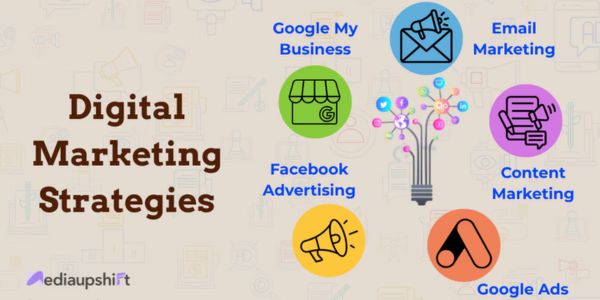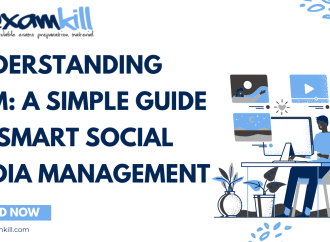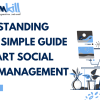Introduction Small businesses are the backbone of every economy. Yet, in today’s crowded marketplace, standing out and gaining customer attention can feel overwhelming. Unlike large corporations with deep pockets and massive marketing teams, small business owners often juggle multiple roles while working with limited resources. This makes it essential to adopt marketing strategies that are
Introduction
Small businesses are the backbone of every economy. Yet, in today’s crowded marketplace, standing out and gaining customer attention can feel overwhelming. Unlike large corporations with deep pockets and massive marketing teams, small business owners often juggle multiple roles while working with limited resources. This makes it essential to adopt marketing strategies that are cost-effective, measurable, and capable of delivering tangible results.
This is where digital marketing truly shines. The internet has leveled the playing field, giving small businesses the ability to reach targeted audiences, build lasting relationships, and compete with much larger competitors. By focusing on proven strategies, even the smallest companies can create a powerful online presence that drives consistent growth.
Here are seven digital marketing strategies every small business should use to thrive in today’s competitive environment.
Rise of Digital Marketing for Small Businesses
In recent years, digital marketing has become more important for small businesses. As more people use the internet to find products and services, businesses have moved online to meet them there. Social media, search engines, and mobile devices have made it easier for small companies to reach customers without spending too much. This rise in digital tools has helped even the smallest business compete with larger ones on a more level playing field.
Benefits of Digital Marketing for Small Businesses
Digital marketing gives small businesses many strong benefits. It allows them to reach more people for less money compared to traditional advertising. With the right strategy, they can target the exact audience they want, track results in real-time, and build long-term customer relationships. It also helps improve brand awareness, drive traffic to websites, and boost sales—all without needing a big marketing team or huge budget.
Role of Digital Marketing in Small Business Growth
Digital marketing plays a key role in helping small businesses grow. It makes it easier for them to be found online, connect with customers, and promote their products or services. Whether through social media, email, or search engines, these strategies help businesses build trust, keep in touch with customers, and grow their reputation. Over time, this helps increase customer loyalty and drive business success.
Top 7 Digital Marketing Strategies for Small Businesses
1. Leverage Search Engine Optimization (SEO)
Search Engine Optimization, or SEO, is the foundation of digital marketing success. Without it, even the best-designed website will struggle to attract visitors. SEO ensures that your business appears when customers search for products or services you offer.
For small businesses, focusing on local SEO is particularly effective. This involves:
- Claiming and optimizing your Google Business Profile to appear in local map results.
- Using location-specific keywords such as “florist in Denver” or “best dentist near me.”
- Collecting positive online reviews that build trust and improve rankings.
- Ensuring mobile optimization, since most local searches happen on smartphones.
By investing in SEO, small businesses not only gain visibility but also attract high-intent customers who are actively looking for what they offer. Unlike paid ads, SEO provides long-term, sustainable traffic that compounds over time.
2. Invest in Content Marketing
Content marketing is one of the most powerful ways to connect with your target audience while showcasing your expertise. Quality content educates, informs, and inspires, which naturally builds trust and encourages engagement.
Some forms of content small businesses can create include:
- Blog posts that answer common customer questions.
- How-to guides and tutorials that provide practical value.
- Videos showcasing products, services, or behind-the-scenes stories.
- Infographics to present data or insights in a visually appealing way.
- E-books or checklists offered as free downloads in exchange for emails.
For example, a small accounting firm could publish articles on tax tips for freelancers, while a fitness studio might share workout videos. Over time, this content builds authority, attracts organic search traffic, and positions your business as the go-to resource in your niche.
3. Harness the Power of Social Media
Social media platforms provide unparalleled opportunities for small businesses to connect with customers. The key is not just posting frequently but engaging meaningfully with your audience.
Effective social media strategies include:
- Sharing blog posts, product updates, or special offers with eye-catching visuals.
- Using interactive features like polls, Q&A sessions, or live streams.
- Collaborating with other local businesses for cross-promotion.
- Running targeted ads to reach specific demographics affordably.
For example, a small restaurant could post daily specials on Instagram Stories, run Facebook contests to boost engagement, or partner with local food bloggers for exposure. The authenticity and personal touch of small businesses often resonate more strongly on social media compared to polished corporate accounts.
4. Build Strong Email Marketing Campaigns
Email marketing is often underestimated, yet it consistently delivers one of the highest returns on investment in digital marketing. It allows you to nurture relationships with existing customers while encouraging repeat purchases.
Steps for success in email marketing include:
- Creating an opt-in list by offering discounts or free resources.
- Segmenting your audience so messages feel personalized.
- Sending regular newsletters with updates, tips, or promotions.
- Including clear calls-to-action (CTAs) that guide readers back to your website.
For example, a boutique could send seasonal style guides to its subscribers, while a wellness coach might share weekly motivation tips. Personalized, value-driven emails strengthen trust and increase customer lifetime value.
5. Explore Paid Advertising (PPC and Social Ads)
While organic growth is essential, sometimes small businesses need faster results—and that’s where paid advertising comes in. Pay-per-click (PPC) ads, whether on Google or social media, provide immediate visibility to your ideal audience.
The advantages include:
- Precise targeting based on demographics, behaviors, or search intent.
- Flexible budgets that allow small businesses to start small and scale gradually.
- Detailed analytics to measure performance and ROI.
For example, a local home repair company could run Google Ads targeting homeowners searching for “emergency plumber near me.” The key is crafting strong ad copy and pairing it with optimized landing pages that encourage conversions.
6. Use Influencer and Partnership Marketing
Influencer marketing isn’t just for big brands. Small businesses can benefit greatly by partnering with micro-influencers—those with smaller but highly engaged audiences. These influencers often have stronger trust with their followers, making them ideal collaborators for authentic promotion.
In addition to influencers, local partnerships are another powerful way to grow. A yoga studio might team up with a health food store for joint promotions, or a local bookstore might collaborate with a coffee shop for shared events.
Companies like mediaupshift show how creative partnerships and influencer collaborations can maximize exposure without massive budgets, helping small businesses punch above their weight.
7. Monitor Analytics and Continuously Improve
Digital marketing offers one huge advantage over traditional marketing: everything is measurable. By monitoring performance, small businesses can identify what works, stop what doesn’t, and refine their strategies.
Key metrics to track include:
- Website traffic and bounce rates.
- Conversion rates from campaigns.
- Social media engagement levels.
- Email open and click-through rates.
Tools like Google Analytics, SEMrush, and social media dashboards provide actionable insights. For example, if a particular blog post drives lots of traffic, you could repurpose it into a video or infographic. By using data as a guide, small businesses can stretch limited budgets further and achieve consistent growth.
Bringing It All Together
For small businesses, digital marketing is not a luxury—it’s a necessity. By leveraging strategies such as SEO, content marketing, social media, email campaigns, paid advertising, influencer partnerships, and analytics, small business owners can create a powerful growth engine.
The key lies in consistency, creativity, and adaptability. Small businesses that commit to these strategies will not only improve visibility but also foster long-lasting customer relationships. With persistence, even modest efforts can deliver impressive results.
The digital world has opened endless opportunities for small businesses. By embracing these seven strategies, you can confidently compete in your industry, attract loyal customers, and achieve sustainable success.
Challenges in Using Digital Marketing
While digital marketing offers many advantages, small businesses often face challenges when trying to use it. Some may not have the time or knowledge to run online campaigns effectively. Others struggle to keep up with changing trends and technologies. Budget limitations and lack of staff can also make it hard to manage digital marketing properly. These problems can slow down progress and make it harder to see results.
Future of Digital Marketing for Small Businesses
The future of digital marketing looks bright for small businesses. New tools and platforms are becoming easier and cheaper to use. Artificial intelligence, automation, and better data tracking will help businesses make smarter decisions. As more people shop and interact online, digital marketing will continue to grow. Small businesses that keep learning and adapting will have more chances to succeed and stand out from the competition.
Conclusion
Digital marketing doesn’t have to be hard or expensive. By using these 7 strategies—building a good website, using SEO, creating content, being active on social media, trying paid ads, sending emails, and getting reviews—you can grow your small business and reach more people online. Start with one or two strategies and grow from there. With time and effort, your business can stand out, attract loyal customers, and achieve long-term success. Small steps today can lead to big results tomorrow.






















